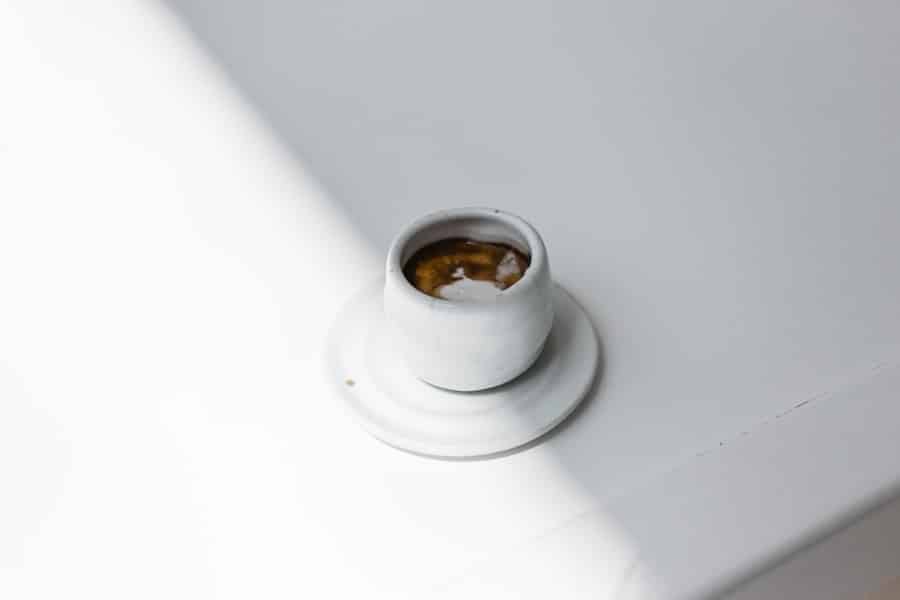In recent years, the issue of air quality in urban environments has escalated into a significant public health concern. Rapid urbanization, industrial emissions, and increased vehicular traffic have contributed to a marked decline in air quality, leading to a rise in respiratory diseases and other health complications. According to the World Health Organization (WHO), air pollution is responsible for approximately 7 million premature deaths annually, with urban areas being particularly affected due to their dense populations and concentrated sources of pollution.
The particulate matter (PM2.5 and PM10), nitrogen dioxide (NO2), and sulfur dioxide (SO2) levels in cities often exceed safe limits, prompting citizens and health organizations to advocate for cleaner air initiatives. Moreover, the impact of poor air quality extends beyond immediate health effects; it also influences mental well-being and overall quality of life. Studies have shown that prolonged exposure to polluted air can lead to cognitive decline and increased anxiety levels.
As urban dwellers become more aware of these risks, there is a growing demand for solutions that can mitigate the effects of air pollution on their daily lives. This has led to an increased interest in personal air purification technologies, particularly wearable devices that can provide immediate relief from harmful pollutants.
Key Takeaways
- Air quality in urban areas is a growing concern due to pollution and environmental factors.
- Wearable air purifier technology has been developed to address the issue of air pollution for city dwellers.
- Benefits of wearable air purifiers include protection from harmful pollutants, allergens, and improved respiratory health.
- Different types of wearable air purifiers are available, including masks, necklaces, and wristbands.
- Wearable air purifiers work by filtering out pollutants and providing clean air for the user to breathe.
The Development of Wearable Air Purifier Technology
Advancements in Filtration Technology
Improvements in filtration technology, battery life, and miniaturization of components have fueled the development of wearable air purifiers.
Effective Filtration Systems
One notable example of this innovation is the development of personal air purifiers that utilize HEPA (High-Efficiency Particulate Air) filters. These filters are capable of trapping 99.97% of particles as small as 0.3 microns, making them crucial in urban settings where fine particulate matter poses a significant health risk. Additionally, some wearable purifiers incorporate activated carbon filters to absorb volatile organic compounds (VOCs) and odors, further enhancing their effectiveness.
Smart Features and Integration
As technology continues to advance, manufacturers are exploring the integration of smart features, such as real-time air quality monitoring and connectivity with mobile applications. This allows users to track their exposure levels and adjust their usage accordingly, taking their personal health and environmental awareness to the next level.
Benefits of Wearable Air Purifiers for City Dwellers
Wearable air purifiers offer a multitude of benefits for individuals living in urban areas plagued by pollution. One of the most significant advantages is the ability to provide localized air purification.
This feature is particularly beneficial for commuters who spend considerable time outdoors or in crowded public transport systems. Furthermore, these devices can enhance overall well-being by reducing exposure to allergens and irritants that can trigger respiratory issues or exacerbate existing conditions such as asthma or allergies. For instance, individuals who are sensitive to pollen or dust can benefit from wearing an air purifier during peak allergy seasons or in areas with high levels of particulate matter.
Additionally, the psychological comfort provided by knowing one is protected from harmful pollutants can lead to improved mental health outcomes, allowing city dwellers to engage more fully in outdoor activities without fear of adverse health effects.
Different Types of Wearable Air Purifiers Available
The market for wearable air purifiers has diversified significantly, offering consumers a range of options tailored to different needs and preferences. One common type is the neck-mounted purifier, which resembles a necklace or collar and uses fans to circulate clean air around the user’s face and neck. These devices are often lightweight and designed for comfort, making them suitable for extended wear during daily activities.
Another popular option is the portable handheld purifier, which can be carried in a bag or pocket and activated when needed. These devices typically feature rechargeable batteries and can be used in various settings, from crowded public transport to outdoor events. Some models even come equipped with UV-C light technology that claims to kill bacteria and viruses in addition to filtering out particulate matter.
Additionally, there are innovative designs such as masks integrated with air purification technology. These masks not only provide protection against airborne pathogens but also filter out pollutants effectively. With the rise of health-conscious consumers, manufacturers are increasingly focusing on aesthetics and functionality, leading to stylish designs that appeal to a broader audience.
How Wearable Air Purifiers Work
Wearable air purifiers operate on principles similar to traditional air purifiers but are optimized for personal use. Most devices utilize a combination of filtration methods to ensure comprehensive purification. The primary mechanism involves drawing in ambient air through a fan system, which then passes through multiple layers of filters designed to capture various pollutants.
HEPA filters are commonly employed due to their efficiency in trapping fine particles such as dust, smoke, and pollen. In addition to HEPA filtration, many wearable purifiers incorporate activated carbon filters that absorb gases and odors, providing a more holistic approach to air purification. Some advanced models may also use ionization technology, which releases negatively charged ions into the air to attract and neutralize positively charged particles.
The effectiveness of these devices is often enhanced by their design; for instance, many wearable purifiers are engineered to create a directed airflow that maximizes the amount of clean air delivered to the user while minimizing the intake of contaminated air from surrounding environments. This targeted approach ensures that users receive optimal protection against pollutants while maintaining comfort during use.
Considerations When Choosing a Wearable Air Purifier
Filtration System and Maintenance
One critical consideration is the type of filtration system employed by the device. Look for purifiers that utilize HEPA filters combined with activated carbon for comprehensive pollutant removal. Additionally, check the filter replacement frequency and cost, as regular maintenance is necessary for optimal performance.
Battery Life and Charging Options
Another important aspect is battery life and charging options. Since these devices are intended for on-the-go use, long battery life is crucial for uninterrupted protection throughout the day. Some models offer USB charging capabilities or quick-charge features that can be convenient for busy urban dwellers.
Comfort, Design, and Aesthetics
Comfort and design also play significant roles in user satisfaction. A wearable air purifier should be lightweight and ergonomically designed to ensure it can be worn comfortably for extended periods without causing discomfort or irritation. Aesthetics may also be a consideration; consumers may prefer devices that blend seamlessly with their personal style or those that come in various colors and designs.
The Future of Wearable Air Purifiers
The future of wearable air purifiers appears promising as technological advancements continue to shape this emerging market. With increasing awareness about the detrimental effects of air pollution on health, demand for personal purification solutions is likely to grow. Manufacturers are expected to invest in research and development to enhance filtration technologies further, potentially leading to more efficient systems capable of removing an even broader range of pollutants.
Moreover, the integration of smart technology into wearable purifiers is anticipated to become more prevalent. Features such as real-time air quality monitoring through connected apps could empower users with valuable insights into their exposure levels while providing recommendations on when to activate their devices based on environmental conditions. This data-driven approach could enhance user experience and encourage proactive measures against pollution.
As urban areas continue to grapple with pollution challenges, collaborations between tech companies and health organizations may lead to innovative solutions that address both individual health needs and broader environmental concerns. The potential for wearable air purifiers to evolve into multifunctional health devices—incorporating features like heart rate monitoring or environmental sensors—could further solidify their place in urban lifestyles.
Tips for Using Wearable Air Purifiers Effectively in Urban Environments
To maximize the benefits of wearable air purifiers in urban settings, users should adopt specific strategies tailored to their environments. First and foremost, it is essential to understand when and where pollution levels are highest; this knowledge allows users to activate their devices during peak times—such as rush hour or during outdoor events—when exposure risks are elevated. Additionally, users should ensure that their devices are properly maintained by regularly checking filter conditions and replacing them as recommended by manufacturers.
Neglecting maintenance can lead to reduced effectiveness and may even result in the release of trapped pollutants back into the environment. Furthermore, combining the use of wearable purifiers with other protective measures can enhance overall effectiveness. For instance, wearing a mask designed for pollution protection alongside a wearable purifier can provide an additional layer of defense against airborne contaminants.
Staying informed about local air quality reports can also help users make informed decisions about outdoor activities and when it might be best to stay indoors. Lastly, fostering community awareness about air quality issues can amplify individual efforts; engaging with local initiatives aimed at improving urban air quality can contribute to broader change while encouraging others to consider personal purification solutions as part of their daily routines.
If you are interested in learning more about the latest technology trends, you may want to check out TrustedReviews. This website provides expert reviews of the latest gadgets and devices, including wearable air purifiers for city dwellers. It can help you make informed decisions when choosing the best products to improve your quality of life in urban environments.
FAQs
What are wearable air purifiers?
Wearable air purifiers are small, portable devices designed to filter out harmful particles and pollutants from the air that the user breathes. They are typically worn around the neck or attached to clothing.
How do wearable air purifiers work?
Wearable air purifiers use filters and fans to capture and remove pollutants such as dust, pollen, and smoke from the air. Some models also use ionization or UV-C light to neutralize bacteria and viruses.
Why are wearable air purifiers becoming popular among city dwellers?
City dwellers are increasingly exposed to high levels of air pollution, which can have negative effects on respiratory health. Wearable air purifiers offer a convenient way to protect against these pollutants while on the go.
Are wearable air purifiers effective?
While wearable air purifiers can help reduce exposure to certain pollutants, their effectiveness may vary depending on factors such as the type of pollutants present and the specific design of the device.
Are there any limitations to wearable air purifiers?
Wearable air purifiers may have limited effectiveness in highly polluted environments or against certain types of pollutants, such as gases and chemicals. They also require regular filter replacement and battery charging.
Are there any health benefits to using wearable air purifiers?
Using a wearable air purifier may help reduce the risk of respiratory issues and allergies caused by air pollution. However, it is important to also address air quality at home and in the workplace for comprehensive protection.



